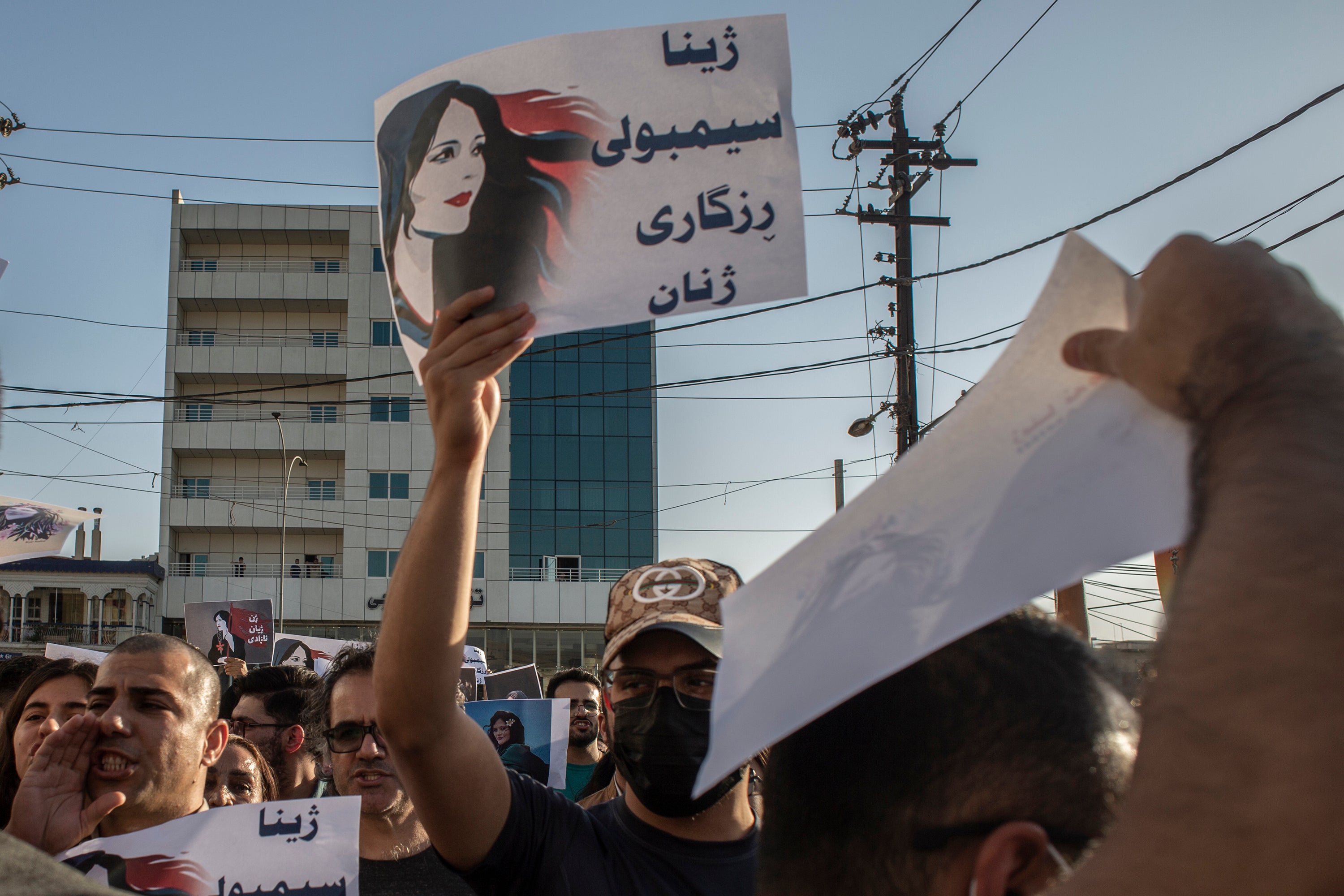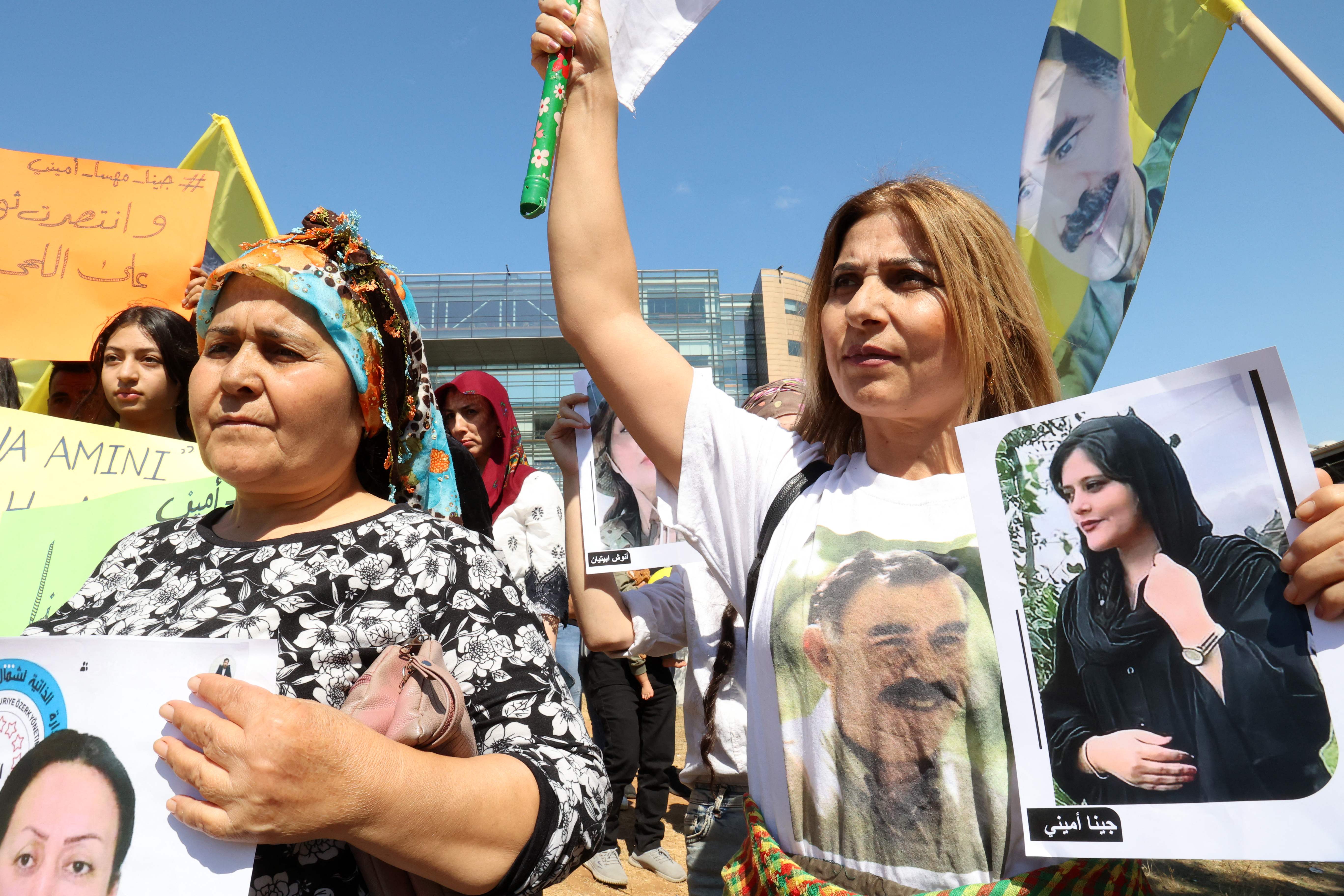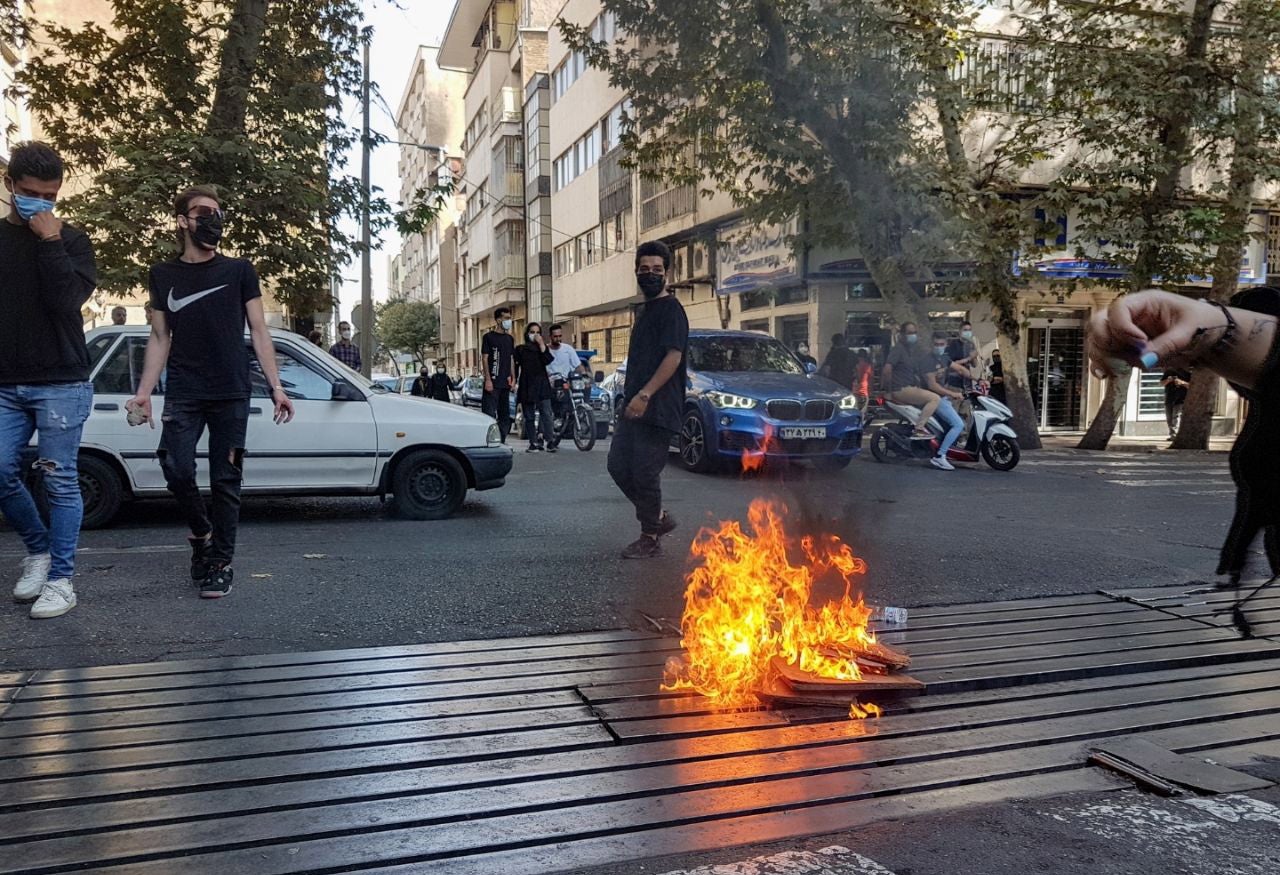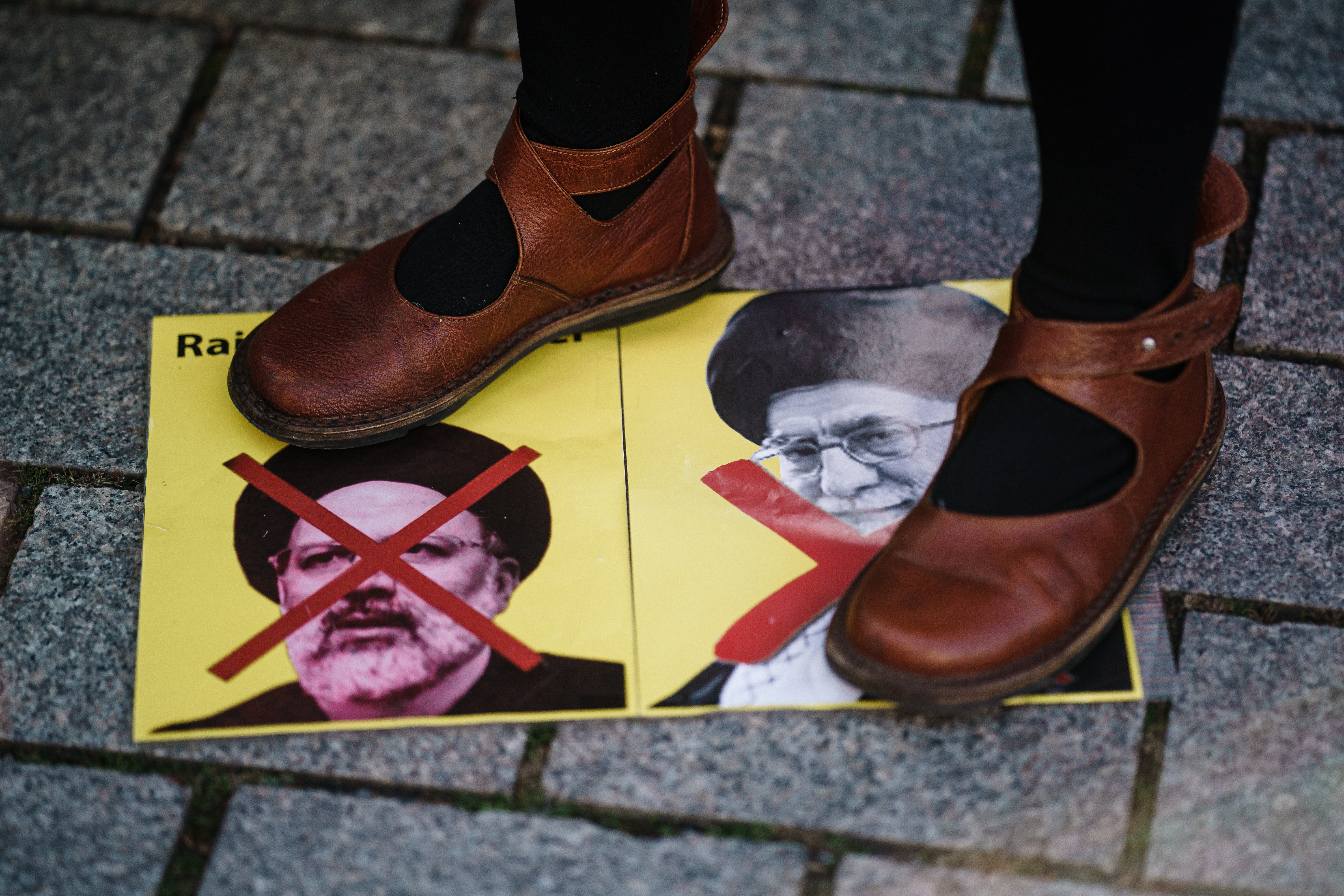Iran’s Kurds play leading role in protests but bear brunt of repression
Kurds are at the forefront of the anti-regime demonstrations, sparked by the death of Mahsa Amini, and are paying a heavy price

Wielding batons, holding shields and wearing helmets, a group of Iranian regime security forces charged down the street, attacking a group of protesters in the ethnic Kurdish city of Sanandaj.
But then moments later, according to video footage captured by a bystander, the shock troops came running back in the opposite direction, fleeing from a counterattack by protesters wielding rocks.
Nearly four weeks of anti-regime protests sparked by the 16 September death of 22-year-old Mahsa Amini have engulfed all of Iran’s major cities as well as smaller towns. But nowhere has the unrest been more ferocious and persistent than among Amini’s fellow ethnic Kurds and in the western cities and towns they dominate.
“What Kurds are demanding is the same as what Iranians have demanded — a secular democracy where everyone has a say,” said Roham Alvandi, a professor of Iranian history at the London School of Economics.
In the towns and cities of Iran’s Kurdish heartland, general strikes have shuttered entire commercial districts, Nightly protests have devolved into fiery battles pitting uniformed police and armed plainclothes paramilitaries against rock-wielding protesters.
At least 32 people have been killed and hundreds injured in several weeks of protest in Kurdish regions, according to Hengaw, an advocacy group, and many fear that the numbers could be far higher. At least 2,500 people have also been arrested.
“They’ve cut off the internet to the Kurdish region,” said Soma Rostami, an Iranian Kurdish spokesperson for Hengaw. “Cutting off the internet means massacres in Iran.”

A Norwegian rights group has counted at least 200 people killed nationwide in the weeks of protests since the death of Amini. Iran’s supreme leader Ali Khamenei, in a speech on Wednesday, dismissed the anti-government protests as riots spurred by outside agitators.
"These scattered riots are the passive and clumsy design of the enemy against the great and innovative developments and movements of the Iranian nation," said the 83-year-old cleric, who has ruled Iran for more than 33 years.
What Kurds are demanding is the same as what Iranians have demanded—a secular democracy where everyone has a say
The death of Amini, who also has the Kurdish first name Jhina, while in the custody of the country’s morality police during a family visit to Tehran and subsequent burial in Iranian Kurdistan has sparked the biggest wave of political unrest in the country since 2009.
It has brought together Iranians of both genders and all ethnic groups in calls to bring about fundamental changes to Iran, which has been under the rule of fundamentalist clergy and their military allies since a 1979 revolution.
Kurds have played a leading role in the unrest. Even the main slogan of the uprising, “Woman, life and freedom,” is adopted from the Kurdish feminist movement.
“The whole movement started with the death of a Kurdish woman,” said Aso Hasan Zade, an Iranian Kurdish academic and former deputy-secretary general of Kurdistan Democratic Party of Iran. “But the uprising is the accumulation of 40 years of the policies of the regime.”
Mr Hasan Zade said Kurds had a leading role in the protest, but they were inspired by the support of other Iranian ethnic groups, including Persians, Arabs, and Baluchis.

Accounting for about 12 per cent of Iran’s 86 million people, Kurds are arguably the most politically advanced of the country’s groups. Several important political parties, most with offices in neighbouring Iraqi Kurdistan, maintain a clandestine presence among Iranian Kurds, who live all throughout the country but are concentrated in several western provinces.
“It’s the only part of Iran where political organisations, although banned, have an undeniable leverage over the population and can mobilise very effectively,” said Mr Hasan Zade.
The regime has blamed Iraq-based Kurdish militant groups for stirring up the violence, and has fired rockets into positions of the several such groups in recent weeks, killing more than a dozen people and prompting outrage by both authorities in Baghdad and Erbil, capital of Iraq’s autonomous Kurdish region. In his speech on Wednesday, Mr Khamenei described some of the protesters as “the enemy’s agents”, insisting that they be suppressed by security forces.
Saqez, Amini’s hometown and a county seat of 165,000 people, has been a hotbed of political unrest, and on Wednesday, video footage showed fires in the city centre. There have been repeated clashes between protesters and police in the major city of Kermanshah, as well as Bukan and Mahabad, capital of a short-lived Kurdish republic established after World War II.
But it is Sanandaj, a city of 500,000 capital of Iran’s Kurdistan province, that has been the focus of protests and security forces. Videos have shown dramatic political violence in the city, with rock-wielding protesters confronting regime gunmen opening fire on residential areas.
A capital of Kurdish culture, Sanandaj has long been a centre of resistance to the Islamic Republic, including in the first years after the revolution. Iranians Kurds are Sunni but tend to be more secular and fought attempts by clergy to impose a Shia theocracy. Hundreds of people were killed in fighting and in mass executions during the 1980s.

“The reality is that the protests started in Kurdistan,” said Ms Rostami. “The crimes that are taking place by the regime in Kurdish areas are more extreme than other parts of Iran and that is convincing people to push harder for what they want.”
Kurds in Iran do not suffer the same level of discrimination as they do in Turkey and Syria or that they have historically withstood in Iraq, Over the decades, Iranian Kurds situation has waxed and waned. But the teaching of the Kurdish language in schools remains forbidden, and unemployment and underdevelopment persist, as they do in most minority areas. The atmosphere in Kurdish areas remains securitised.
“We are absolutely suffering from chauvinistic and racist policies of the regime,” said Mr Hasan Zade. “But for the first time in the history of the country the way that Persian people look at Kurds has changed. Today the rest of the Iranian society is absolutely aware of the Kurdish plight.”
Kurds in Iran are not homogenous. In addition to sectarian differences there are class divisions, and the regime elite has long included ethnic Kurds, although rarely in the highest positions. Militants tend to be more working class, as well as intellectuals loyal to Kurdish political parties.
Professor Alvandi said Kurds’ access to the porous Iraqi border makes it easier for them to access information and more challenging for security forces to clamp down.

“In some of these border regions the central government has a lot less control,” he said, “The writ of the central government is not as strong and that creates an opportunity for organised forms of resistance.”
Join our commenting forum
Join thought-provoking conversations, follow other Independent readers and see their replies
Comments


Bookmark popover
Removed from bookmarks